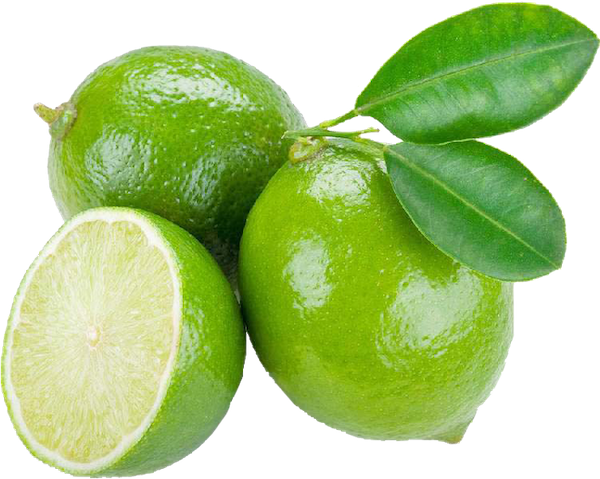Cheap Eats:
Sopa de Lima
Yucatecan Lime Soup
Limes can surprise you. When I first had sweet lime soda in India, I thought they were just talking about lime soda with sugar in it, but I have since discovered that, in addition to the tart, acidic limes with which I am most familiar, there are actually sweet limes, primarily grown in the Middle East and India. (Sweet limes aren’t so much sugary as they are lacking in citric acid.)

And I always thought that green was the proper color for limes (hence, “lime green”). In reality, limes are green because they are picked green. They would turn yellow if they were allowed to ripen—and, in fact, in some countries, they are allowed to ripen, and they look like lemons. However, one can tell the difference by taste and smell, and the flesh has a greenish tinge to it that gives it away, once it’s cut.
Limes probably originated in Malaysia or the Indonesian archipelago. It is hard to trace the early history of limes, both because there are few records of cultivation in many areas and because, in India, where there are records, a medical work dating to about A.D. 100 employs the same word to identify limes and lemons. It seems most likely that Arab traders introduced limes, probably from India, to the eastern Mediterranean and Africa around A.D. 1000, and lime seeds were carried to western Europe as Crusaders returned home in the 1100s and 1200s. Columbus carried citrus seeds, probably including lime seeds, with him during his second voyage to the New World, but even if it wasn’t Columbus who first carried them, limes were soon proliferating in the West Indies, Mexico, and Florida.
The limes known as Mexican, Indian, or Key limes are varieties of citrus aurantifolia, the same species as the original limes from Southeast Asia, but they are not the only species. Another species of lime cultivated in the Orient and introduced by way of Persia are known (not unreasonably) as Persian limes. This species appears to have traveled from the Mediterranean to Brazil, then to Australia, Tahiti, and finally to California. This circuitous route is why this species is sometimes also called the Tahitian lime.
Limes are grown in tropical and subtropical areas, but while lemon is more common in the subtropics, lime is generally the acid fruit of choice in the tropics. (It is hard to think of a tropical cuisine that does not feature lime in at least a few memorable dishes.) Mexico is the world leader in growing limes, followed by Egypt, then the United States. But limes are grown in virtually all citrus-growing regions.
I discovered this lovely, refreshing soup while traveling around Mexico’s Yucatan Peninsula. It is simply delicious. There are almost as many variations as there are people preparing this common Yucatecan dish, but they all include chicken and limes. The recipe below recreates the versions I most commonly encountered. Enjoy.
Sopa de Lima
Yucatecan Lime Soup
2 whole chicken breasts (about 1.5 lb. each), split
4 cups chicken broth
4 cups water
1 medium onion, chopped, divided in half
3 cloves garlic, chopped
8 whole black pepper corns
1 2-inch stick canela (see note)
8 whole allspice berries
Rinse chicken breasts and place in a large pot with the broth and water. Bring to a boil, skimming any foam that rises to the surface. When foam stops forming, add half the onion, the garlic, black pepper, canela, allspice, oregano, salt, and the 3 sprigs of cilantro. Return to the boil, stir, reduce heat, and simmer, covered, for 35-40 minutes, or until chicken is tender.
Take pot off the heat and allow to cool slightly, then remove the breasts, skin, debone, and shred the meat with a fork. Strain the broth and set aside.
In a large frying pan, heat the oil, and sauté the remaining onion for 2 minutes, or until transparent. Add the green pepper and sauté an additional two minutes. Reduce heat to medium, add tomatoes, and cook for 2 minutes, stirring constantly. Add the broth to the vegetables in the pan and bring to a boil. As soon as the broth boils, reduce heat, add lime juice and shredded chicken. Leave on medium heat until chicken is heated through.
To serve, put a lime slice in the bottom of each bowl, and ladle soup over it. Then sprinkle with chopped, fresh cilantro.
Serves 6.
Notes
Canela is real cinnamon, the original soft-barked kind from Sri Lanka. Most cinnamon sold in the U.S. is actually cassia bark, which is very similar in taste, but stronger and a bit harsher. However, if you don’t have a handy Hispanic grocer or spice store that sells canela, you can use a stick of regular “cinnamon.”
In the Yucatan, the limes used in this are the local bitter limes. They are quite similar to the Key limes of Florida, so that would be a good alternative—though you may find Mexican limes in your grocery store. However, the soup is perfectly delicious made with the Persian limes more commonly found in the United States. But if not using the intended limes, one may need to add a bit more juice to the recipe. You can start with 3 Tbs., and then add another Tbs. if the soup needs it. The lime should be quite obvious but not overpowering. You want to know it’s lime soup, but you want to be able to taste that there are other ingredients.
Lime slices and chopped cilantro are common garnishes, but so are fried tortilla strips. If you want to add this very popular garnish, cut 3 corn tortillas into ¼- to ½-inch-wide strips and fry in vegetable oil until crisp. Place the tortilla strips in the soup bowls, after the lime slice, before adding the soup.

